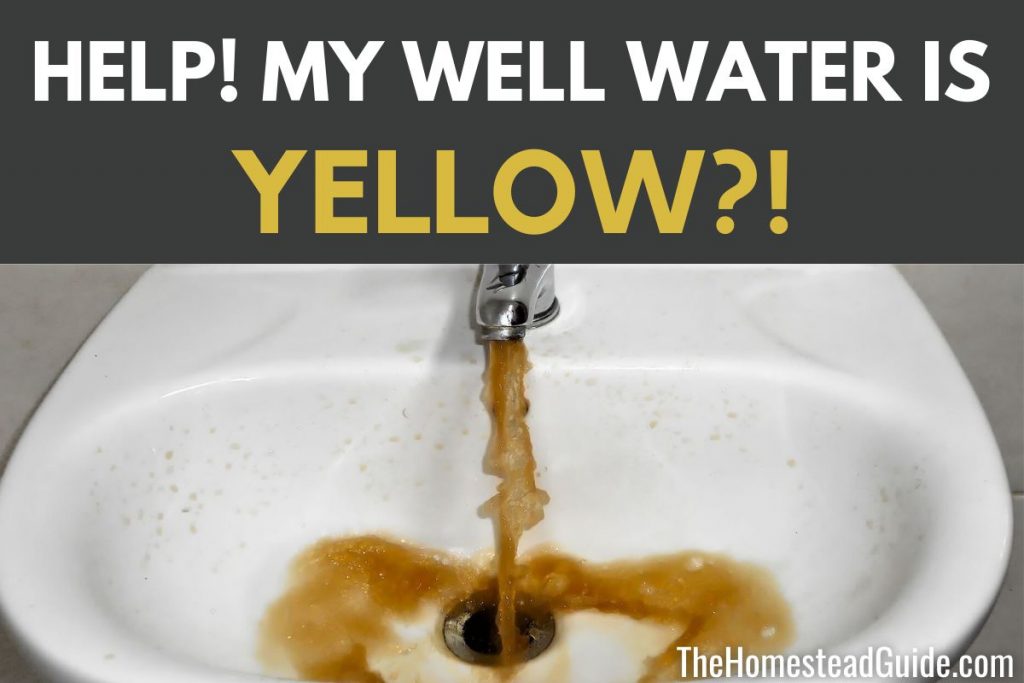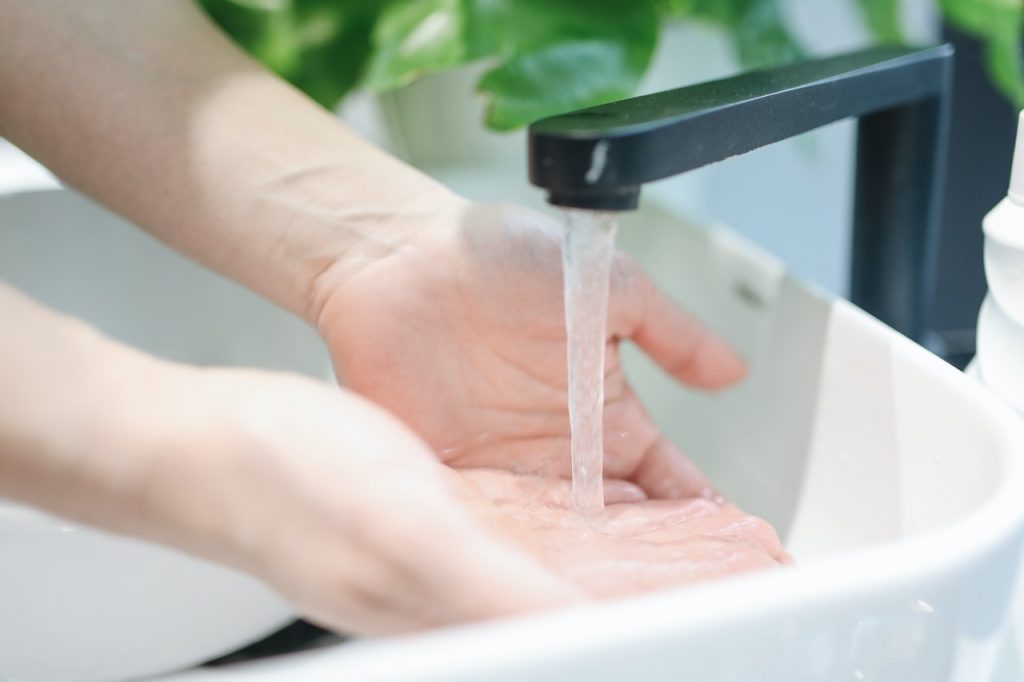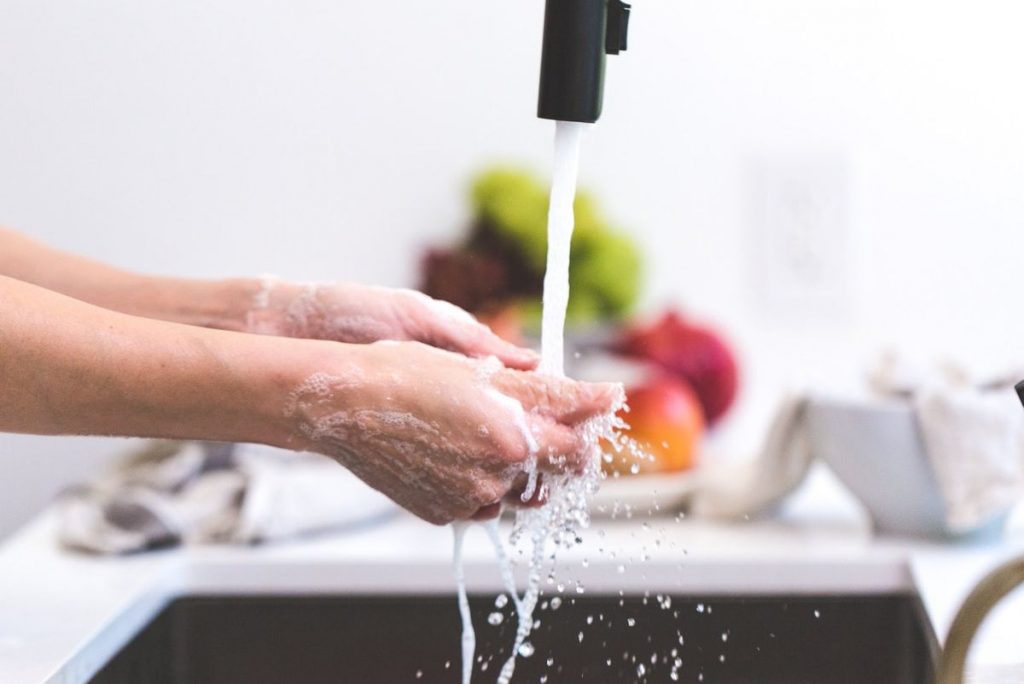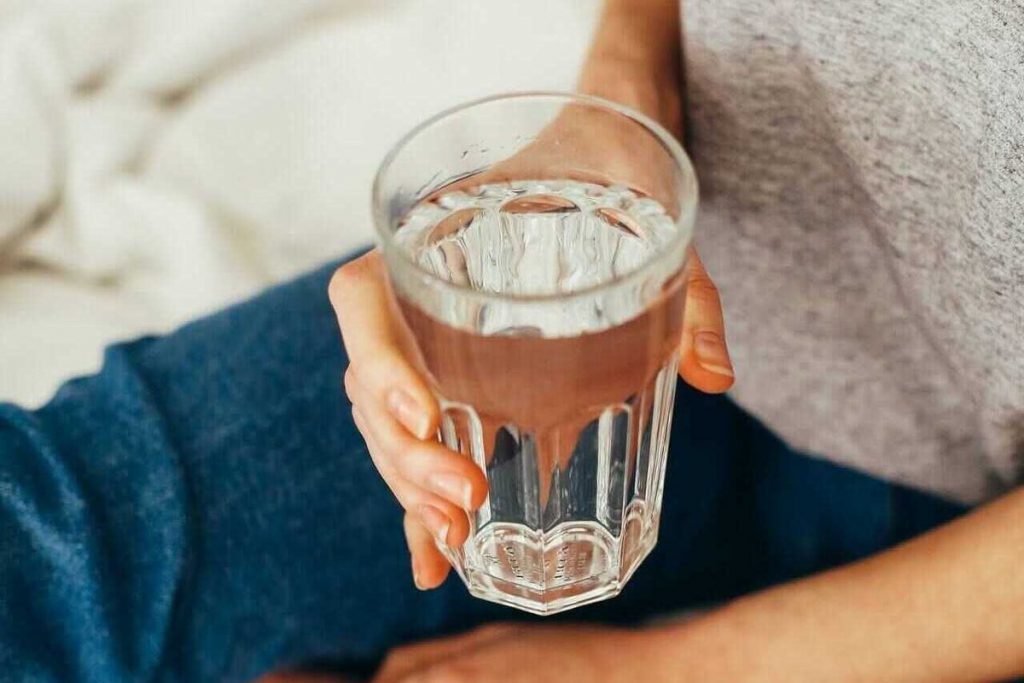If your well water has suddenly turned brown or yellow, it can be startling and worrisome. You In many cases, it’s nothing to worry about, but in some cases, it can be a sign of a more serious issue.
The causes of yellow well water vary, but often it’s simply a sign that the water needs treatment or your appliances may need some maintenance. In this post, we’ll explore six of the most common reasons for yellow well water, and we’ll also share some tips on how to fix them. So if you noticed discoloration in your well water and are frantically thinking, “why is my well water yellow” – don’t panic! We’ll help you get to the bottom of things.
1. You have a corroded faucet
The first thing you should check for is whether your faucet is corroded. If that’s the case, it’s an easy enough fix to simply replace the faucet. Maybe it was time for a little facelift anyway!
To check whether one of your faucets is corroded and turning your water yellow, simply turn on another faucet in your house and see if the water looks any better. You could fill two glasses of water and compare both side-by-side to make it easier.
It might sound like an obvious reason now, but when you turn on the tap expecting to get some nice fresh water and it comes out a dingy yellow or brown, you might freak out and run to the computer right away! So don’t worry – we have your back!
2. Your water heater has rust inside it
You might not think about your water heater being a reason for brown or yellow well water, but it is certainly possible that it could accumulate rust over time and release it into your hot water supply.
Again, this is an easy troubleshooting step to check: turn on your hot water only and let it run for a few minutes. If the water seems to be getting more yellow as the water heats up, it is very likely that your water heater is the problem. In this case, it may be time for a new water heater.
3. Your water has iron bacteria in it
Not to be confused with iron buildup, iron bacteria are tiny microorganisms that use iron or manganese as an energy source and occur naturally in the soil and surface water in many areas. If soil or groundwater enters your well, the bacteria can come in contact with iron from your pipes and start to multiply and leave slimy deposits. It can also cause a musty or earthy smell in your well water.
While iron bacteria isn’t considered to be life-threatening or disease-causing, it can create favorable conditions for other types of bacteria and can even lead to clogging issues in your plumbing.
If you suspect this is the cause or even just to be safe, you should test your well water for bacterial contaminants, including coliform and nitrate bacteria. It is also very important to make sure your well is properly constructed and maintained so that soil and groundwater cannot enter it.
4. There is a buildup of iron and manganese in your water
Iron buildup and iron bacteria are not the same thing, but they often go hand in hand. Iron and manganese are naturally occurring elements in the earth’s crust. These minerals can become dissolved in the groundwater and can contaminate your well. Iron causes reddish-brown stains and manganese causes brownish-black stains. They can combine and appear as a dark yellowish color in your water. Do not try to bleach these stains out, as it can make them worse!
You will need to test your water for contaminants. Ideally, you will want to have a laboratory test for the amount of substances present and measure the pH and hardness of the water as well. We’d recommend getting in touch with your municipality or county health department to be pointed in the right direction.
If it turns out that you do have iron and/or manganese in your water, your options are to either install a well in a new location or treat the water to remove the contaminants. Treating the water is likely the easier method of the two. I found this article to be an excellent resource on effective treatment options for iron and manganese contamination!
5. Your pipes are rusting
If you run your faucets for a few minutes and the color seems to clear up, the issue may just be that you have old pipes that have started to accumulate rust. If you recently bought an old farmhouse, this could very much be the cause.
The best solution is to have the rusty pipes replaced. We definitely recommend having an experienced plumber come in for an assessment to verify if this is the cause before making the decision to replace your pipes.
6. You have tannins in your well water
Finally, a very common reason for your well water turning yellow or brown is simply organic material like tannins in your water supply, especially if you have a shallow well.
You may have heard the term already if you’re a wine drinker, but tannins occur all over nature, not just in grape skin! In short, tannins are caused by vegetation breaking down and naturally fermenting. Groundwater seeps through many layers of decaying soil and vegetation, so it is very possible that by the time it reaches your well’s aquifer, it has taken on a shade of yellow.
Fortunately, tannins are not at all dangerous to consume. Unfortunately, organic material in your well water can turn it an unpleasant yellow shade and can smell musty and earthy, even fishy. Once in a while, I can smell something weird and musty in our well water, which I suspect is just organic material breaking down, and it clears itself up in a day or two.
Conclusion
Nobody expects their water to suddenly turn yellow or brown, but it is no reason to panic! We hope that this troubleshooting list helps to ease your mind and figure out the cause of your yellow well water. In most cases, it’s a simple fix or it can even go away on its own. If it turns out that you need to replace some plumbing or appliances, it is still an excellent investment in your homestead property! A lot of old farmhouses have their original plumbing, so you’ll probably end up having to replace it at some point anyway. Either way, I am sure you will be very glad you did in the long run!
Have you had any experiences with your well water turning yellow or brown? What did it turn out to be? Let me know in the comments!





